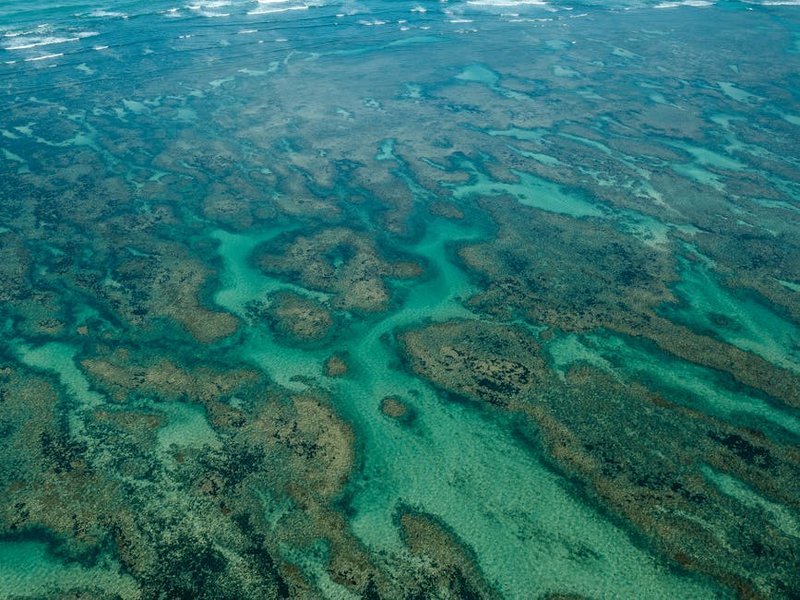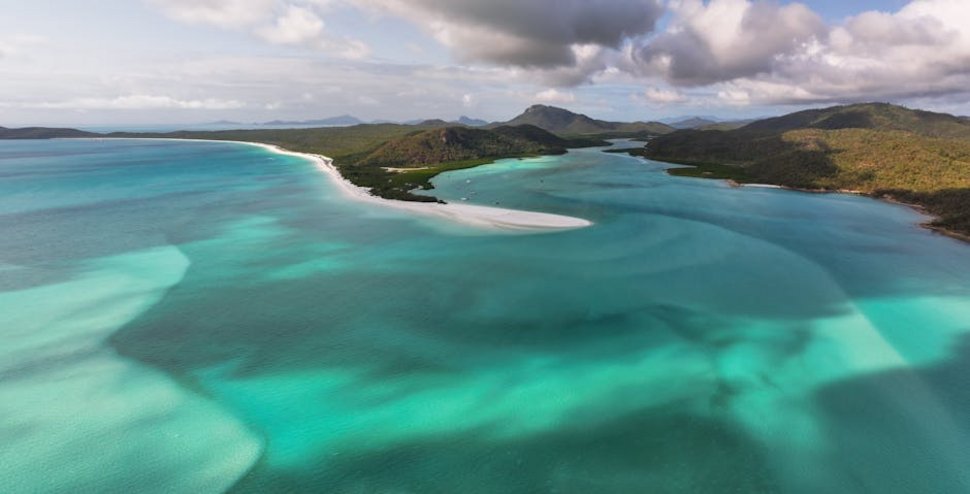Cairns Great Barrier Reef: Your Ultimate Guide to Australia’s Natural Wonder
Imagine floating above a living kaleidoscope of colors, where turquoise waters reveal intricate coral gardens teeming with marine life—this is the Cairns Great Barrier Reef experience that draws millions of visitors annually. As the gateway to the world’s largest coral reef system, Cairns offers unparalleled access to one of Earth’s most breathtaking natural wonders. Whether you’re a seasoned diver or a first-time snorkeler, the Great Barrier Reef from Cairns provides adventures that cater to all experience levels and ages. You’ll discover why this UNESCO World Heritage site deserves its reputation as a must-visit destination, with its combination of accessible marine exploration, stunning tropical surroundings, and world-class tourism infrastructure. From the moment you arrive in this vibrant Queensland city, you’ll feel the pull of the ocean calling you to explore its underwater marvels.
Cairns Great Barrier Reef Essential Information
Before embarking on your aquatic adventure, understanding the fundamentals of the Cairns Great Barrier Reef experience will significantly enhance your visit. The reef stretches over 2,300 kilometers along Australia’s northeast coast, with Cairns positioned as the primary departure point for reef tours. The city itself boasts a tropical climate with distinct wet (December-March) and dry (April-November) seasons, each offering different advantages for reef exploration. You’ll find that most reef tours depart from Cairns Marlin Marina, with trip durations ranging from half-day excursions to multi-day liveaboard experiences. The marine park operates under strict environmental protection guidelines, so you’ll need to follow responsible tourism practices during your visit.
Reef Geography and Ecosystem – What You Need to Know
- The Great Barrier Reef comprises over 2,900 individual reefs and 900 islands, creating the world’s largest structure made by living organisms
- Cairns provides access to both inner reefs (closer to shore, better for beginners) and outer reefs (further out, superior coral quality)
- The reef supports incredible biodiversity with over 1,500 fish species, 400 types of coral, and numerous marine mammals including dolphins and whales
- Budget options: Half-day snorkeling tours start around $90 USD, including equipment and transfers
- Mid-range experiences: Full-day tours with premium reef locations, meals, and guided snorkeling cost $150-250 USD
- Luxury adventures: Helicopter flights, private charters, or liveaboard dive trips range from $400-1,000+ USD
- Great Barrier Reef Marine Park Authority
- Queensland Tourism Official Site
Conservation Status and Regulations – Key Details
As a protected marine park, the Great Barrier Reef operates under specific regulations designed to preserve its fragile ecosystem. You’ll need to pay an environmental management charge (usually included in tour prices) that funds conservation efforts. Touching or standing on coral is strictly prohibited, as the coral polyps are living organisms extremely sensitive to human contact. Many tour operators now provide reef-friendly sunscreen stations, as certain chemicals in regular sunscreens can damage coral. The Great Barrier Reef Marine Park Authority continuously monitors reef health and may close certain areas temporarily if environmental conditions require protection.

Cairns Great Barrier Reef Planning Your Trip
Proper planning transforms a good Great Barrier Reef experience into an extraordinary one. You’ll want to consider seasonality, tour types, physical preparedness, and budget when organizing your Cairns reef adventure. The dry season (April-November) typically offers better visibility and calmer seas, while the wet season (December-March) brings warmer water temperatures but higher rainfall and potential jellyfish presence. Most visitors allocate 3-5 days in Cairns to allow for multiple reef experiences and weather contingencies. Advance booking is highly recommended, especially during peak seasons (June-August and December-January), as quality tours often sell out days or weeks ahead.
Best Time to Visit Cairns Great Barrier Reef
The optimal time for visiting the Cairns Great Barrier Reef depends on your priorities. For ideal diving conditions, target June through October when visibility often exceeds 30 meters and water temperatures hover around 24°C (75°F). Whale watching season runs from June to September when humpback whales migrate along the coast. If you prefer warmer waters (up to 29°C/84°F) and don’t mind occasional rain, November through March offers tropical summer conditions. Stinger season (November-May) requires wearing protective stinger suits when swimming, though reputable tour operators provide these at no extra cost. Regardless of when you visit, the reef offers spectacular viewing year-round.
Budget Planning and Costs
Essential Preparation Checklist
Preparing adequately ensures you maximize your Cairns Great Barrier Reef experience. Pack swimwear, a change of clothes, and a waterproof bag for your tour day. Even experienced boat travelers should consider motion sickness prevention, as the Coral Sea can be unpredictable. If you wear prescription glasses, inquire about prescription mask options or consider disposable contact lenses. Bring certified waterproof photography equipment to capture the underwater magic—many operators offer professional photos, but having your own device ensures you get the shots you want. Don’t forget to hydrate thoroughly throughout the day, as sun and saltwater quickly dehydrate even strong swimmers.
Cairns Great Barrier Reef Top Attractions and Activities
The diversity of experiences available through Cairns Great Barrier Reef tours ensures there’s something for every type of traveler. From the moment you board your vessel, the adventure begins with scenic cruises through islands and reef systems. Snorkeling remains the most accessible activity, requiring minimal training while providing maximum immersion in the underwater world. Certified divers can explore deeper reef sections, walls, and famous sites like the Cod Hole. For those preferring to stay dry, glass-bottom boat tours and semi-submersibles offer spectacular viewing without getting wet. Recent innovations include underwater observatories, helmet diving, and even underwater scooters that make marine exploration accessible to non-swimmers.
Must-See Highlights
Several iconic sites within the Cairns Great Barrier Reef sector deserve special attention. The Agincourt Ribbon Reefs, located on the outer edge of the continental shelf, feature pristine coral formations and abundant marine life including reef sharks, turtles, and giant clams. Moore Reef boasts a recently upgraded pontoon with underwater observatory, waterslide, and snorkeling platforms perfect for families. For divers, the renowned Cod Hole hosts friendly potato cod that often approach divers, while the Pixie Pinnacle’s dramatic coral formations create unforgettable dive experiences. Saxon Reef offers excellent introductory diving with its relatively shallow depths and calm conditions, making it ideal for first-time divers.
Hidden Gems and Local Favorites
Beyond the popular tourist spots, the Cairns Great Barrier Reef region contains lesser-known treasures that reward adventurous travelers. Michaelmas Cay serves as a protected bird sanctuary where you can snorkel around a coral sand island populated by thousands of seabirds. The undersea art museum at John Brewer Reef features sculptures that double as artificial reef structures, combining art with marine conservation. For a truly unique experience, overnight liveaboard trips access remote reef areas rarely visited by day boats, offering night diving and exclusive access to pristine sites. Fitzroy Island, located just offshore from Cairns, provides excellent fringing reef snorkeling right from the beach, perfect for travelers who prefer independent exploration.
Cairns Great Barrier Reef Practical Travel Information
Navigating the practical aspects of your Cairns Great Barrier Reef adventure ensures a smooth and enjoyable experience. Most international travelers fly into Cairns International Airport (CNS), with direct flights available from major Asian hubs and connecting flights from Australian cities. The city center accommodates pedestrians well, with most hotels, restaurants, and the marina within walking distance of each other. Tour operators typically include pickup from city hotels, though self-drive to the marina remains an option. Accommodation ranges from backpacker hostels to luxury resorts, with most reef-focused visitors preferring to stay near the waterfront for convenient tour access.
| Category | Options/Features | Price Range (USD) |
|---|---|---|
| Budget Accommodation | Hostels, budget hotels with shared facilities | $25-60 per night |
| Mid-range Hotels | 3-4 star hotels with pools, restaurants | $80-150 per night |
| Luxury Resorts | 5-star properties with spa, multiple dining options | $200-500+ per night |
| Tourist Transportation | Sunbus public transport, taxis, rental cars | $3-50 per day |


